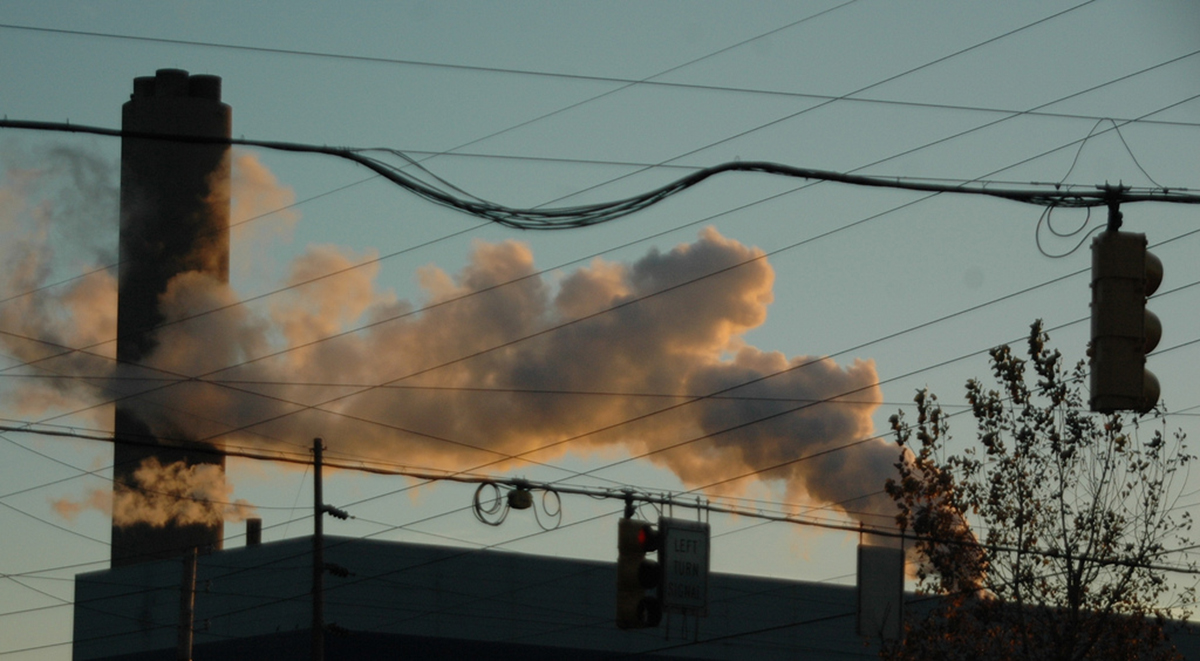The Centers for Disease Control and Prevention (CDC) reports that lung cancer is the most common cause of death from cancer in the US. In 2010, more than 201,000 people were newly diagnosed with the disease and it was projected that in 2013, the numbers would have reached 228,000. Tobacco-smoking has been recognized as the most common cause of lung cancer, with about ninety percent of patients having a history of tobacco use. It is estimated that a person who consumes one pack of cigarettes daily has a risk for developing lung cancer that is 25 times that of a non-smoker.

Lately, however, cancer researchers have found that there has been an increase in the number of people who are non-smokers who are developing the disease. In fact, according to a CNN news report, the World Health Organization (WHO) has recently declared that air pollution is a leading cause of lung cancer. Considering that air outdoors and indoors can be polluted by many types of particles and chemicals, this means that almost anyone can get lung cancer.
What Pollutes the Air We Breathe
Air pollution is known to be a significant factor that contributes to the development of respiratory diseases such as asthma and bronchitis, as well heart disease. Rapid industrialization in many countries has increased the exposure of many people around the world to air pollution. Recent studies show that more than 220,000 deaths due to lung cancer may be attributed to air pollution.
An international panel of experts comprising the WHO’s International Agency for Research on Cancer (IARC) has found evidence that outdoor air pollution can definitely cause lung cancer. After analyzing data from more than 1,000 research papers from North and South America, Europe, and Asia, they have come to a conclusion that outdoor air pollution, including particulate matter, is carcinogenic (cancer-causing) to humans.
Read More: Blame Pollution for the Diabetes and Obesity Epidemics?
It has been difficult to study the effects of air pollution in the past because, for one thing, individual exposure is not easy to measure. People live, work and travel in places with varying pollution levels. Seasonal changes and variations in weather can also affect levels of air pollution. However, we know that the main sources of air pollutants come from transportation (diesel exhaust), industrialization, agricultural emissions, fossil fuels, and fuels used in homes for heating and cooking. Other types of air pollutants are particulate matter, including dust. Most studies, however, only look into the health effects of a few substances that are subject to regulation of air quality around the world.
The air may also be polluted by other substances such as ozone gas, nitrogen dioxide, carbon monoxide, sulfur dioxide and polycyclic aromatic hydrocarbons (PAHs). PAHs constitute a large group of chemicals, over 500 types of which have been found to pollute the air and some of which can cause cancer.
Indoor Air Pollution
The air we breathe inside our homes and offices may not be free from pollution, either. Aside from bacteria, viruses, molds, pollen, dust mites, animal dander, particles from cockroaches which can cause respiratory infections and allergies, there are other chemicals in the air that can cause lung cancer:

-
Second-hand smoke contains hundreds of known poisons, such as carbon monoxide, formaldehyde and more than 60 chemicals that can cause cancer. Second-hand smoke causes up to 3,000 deaths from lung cancer and 50,000 deaths from heart disease every year in the US.
-
According to the American Lung Association, radon is considered to be the second leading cause of cancer in the lungs after cigarette smoke. This natural radioactive gas enters homes and buildings through cracks and openings in the floor, walls, and drains. Exposure to radon is responsible for about 21,000 deaths linked to lung cancer every year.
-
Asbestos-containing products found in roofs, floors, insulation materials and some heating equipment can produce fibers that can cause lung cancer, mesothelioma (another type of cancer), and asbestosis (lung scarring).
-
Other chemicals found indoors that may cause lung cancer include formaldehyde, solvents, household cleaning agents, pesticides, and personal care and hobby products.
What are the Chances of Developing Lung Cancer from Air Pollution?
Previous studies have shown that chronic exposure to air pollution increases the risk of lung cancer in non-tobacco smokers. In China, an increased risk of the disease has been attributed to exposure to burning wood and coal used to heat homes while in European studies, high levels of vehicle exhaust and soot have been linked to lung cancer. Researchers from the University of Ottawa have found that non-smokers who live in highly polluted areas are 20% more likely to die from lung cancer than those lived in places with cleaner air.
It is difficult to predict what the chances are of one developing lung cancer from air pollution alone. As mentioned earlier, it may depend on a number of factors, including where you live, where you work and travel, and maybe even how you use some chemical products at home and at work. Aside from these, if you are a cigarette smoker or are constantly exposed to second-hand cigarette smoke, you may already be at increased risk for developing the disease. Other lifestyle factors such as diet and physical activity as well as genetic factors also contribute to the disease.
Read More: 5 Shocking Sources Of Indoor Air Pollution And How To Get Rid Of Them For Good
Now that air pollution has been classified as a carcinogen Dr Christopher Wild, IARC Director, believes that their recent report should mobilize the international community to act without delay to reduce air pollution. Dr. Lecia V. Sequist, a medical oncologist from the Massachusetts General Hospital Cancer Center believes that research funding for lung cancer must be increased and the stigma of being blamed for the disease must be eliminated, since not all patients who develop cancer of the lungs are smokers.
- CNN. Stigma lingers for deadliest cancer. http://edition.cnn.com/2013/10/30/health/sequist-lung-cancer-stigma/index.html
- Cancer Research UK. The link between air pollution and cancer. http://www.cancerresearchuk.org/cancer-info/healthyliving/harmfulsubstances/airpollutionandradon/harmful-substances-and-cancer-air-pollution-and-radon
- American Lung Association. Indoor Air Quality. http://www.lung.org/associations/charters/mid-atlantic/air-quality/indoor-air-quality.html
- IARC Press Release:Outdoor air pollution a leading environmental cause of cancer deaths. http://www.iarc.fr/en/media-centre/pr/2013/pdfs/pr221_E.pdf
- Photo courtesy of Steve Baker by Flickr : www.flickr.com/photos/littlebiglens/10790855755/
- Photo courtesy of rodtuk by Flickr : www.flickr.com/photos/roderickt-uk/11876458735/
- www.cnn.com
- www.cancerresearchuk.org
- www.lung.org
- www.iarc.fr


Your thoughts on this